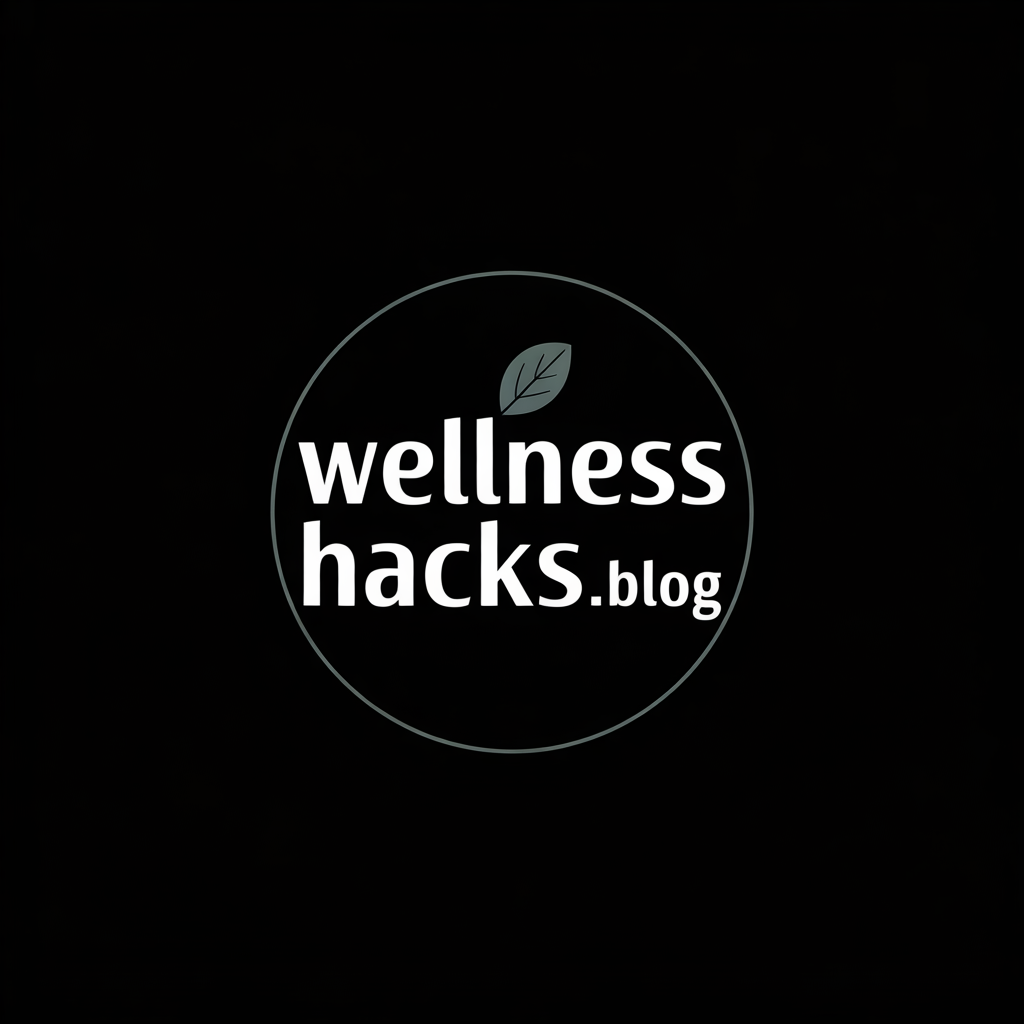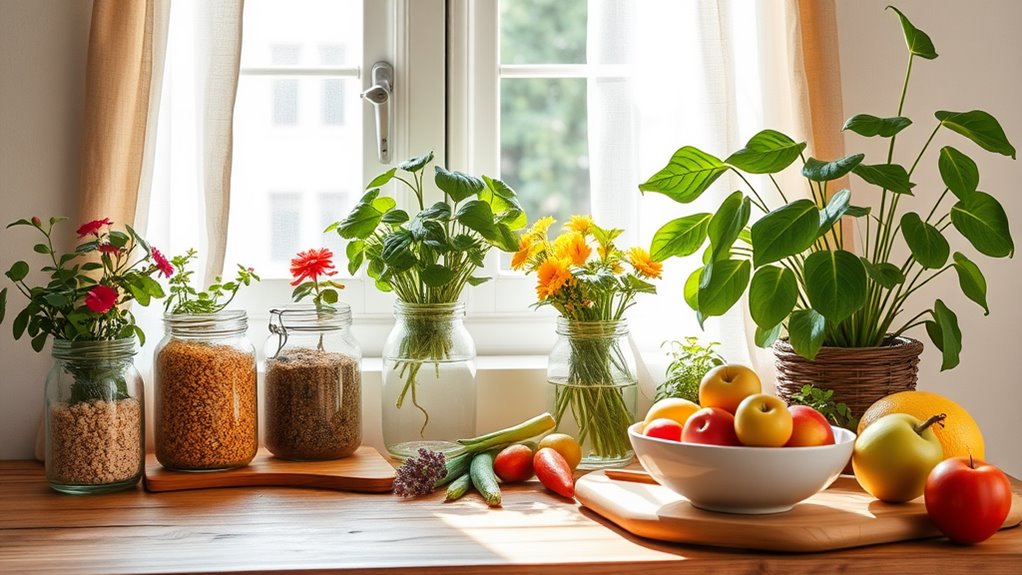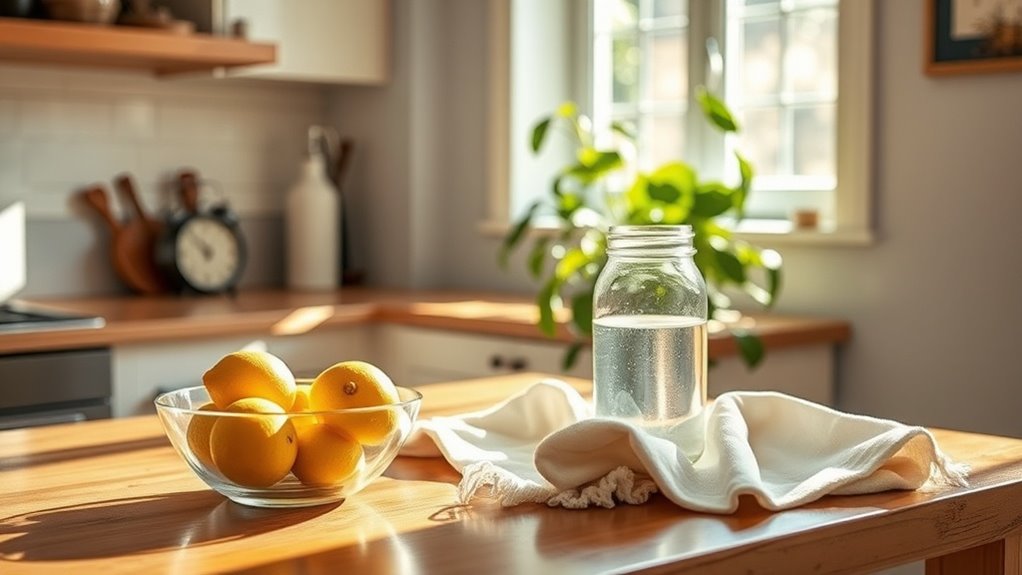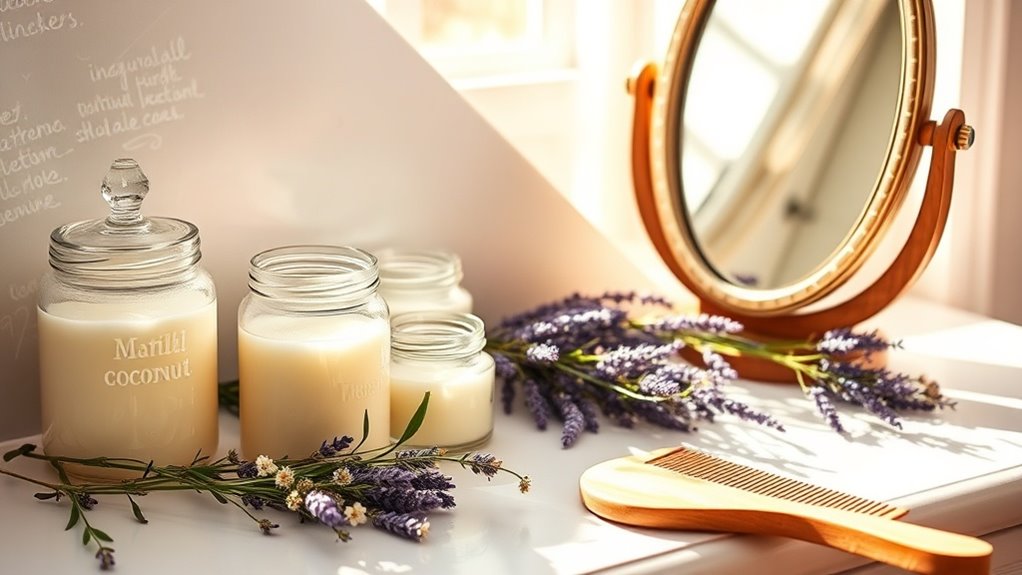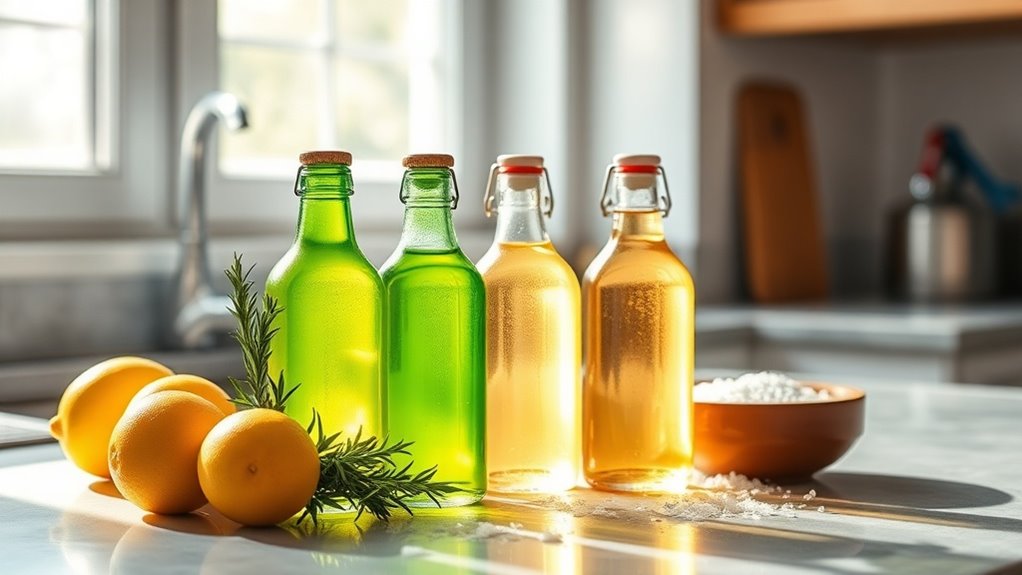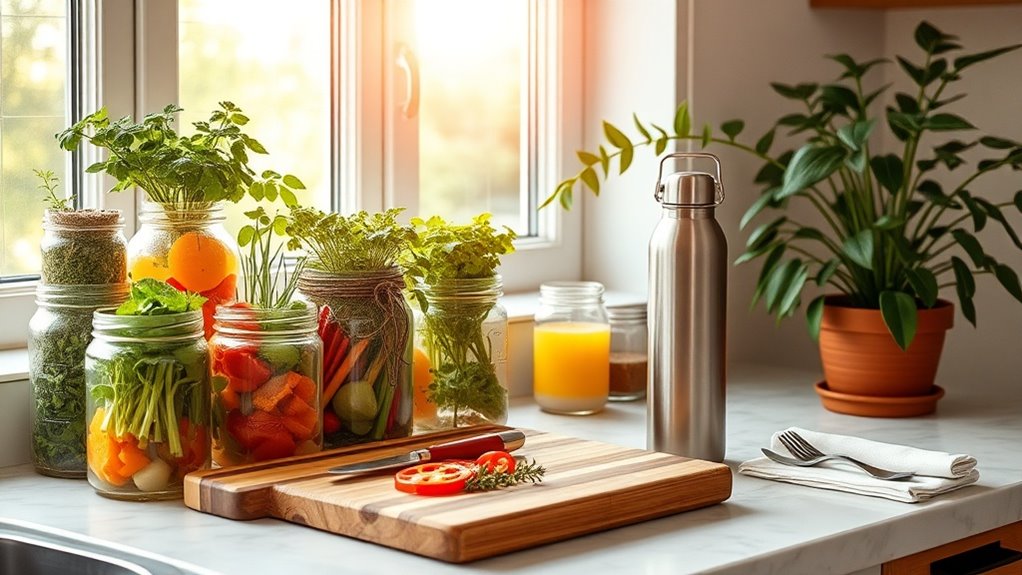Start Here- The Beginner’s Guide to Non-Toxic Living
To start your journey into non-toxic living, focus on reducing harmful chemicals in your home and daily routine. Choose natural, biodegradable products and prioritize organic foods. Declutter to eliminate toxic items and improve air quality. Opt for gentle cleaning solutions like vinegar and baking soda, and select personal care items with safe ingredients. Simple eco-friendly upgrades can make a big difference, creating a healthier environment. Keep exploring to discover more tips and practical steps for a non-toxic lifestyle.
Understanding Non-Toxic Living
What does it really mean to live a non-toxic lifestyle?
At its core, non-toxic living basics focus on reducing exposure to harmful chemicals in your home and daily routines.
This means choosing natural, biodegradable products over synthetic ones, like opting for essential oils instead of artificial fragrances.
You’ll want to declutter your space, eliminating items that contain toxic substances.
Pay attention to your food choices, too; prioritize organic and locally sourced options.
By making these intentional choices, you’re not just benefiting your health; you’re creating a safer environment for yourself and your loved ones.
Incorporating biodegradable products into your daily routine is a crucial step in the journey to non-toxic living.
Embrace these changes and thrive!
The Benefits of a Non-Toxic Lifestyle
Choosing a non-toxic lifestyle can lead to improved health outcomes, making you feel better both physically and mentally.
You’ll also play a crucial role in promoting environmental sustainability, helping to protect the planet for future generations.
Embracing this lifestyle not only benefits you but also contributes to a healthier world. Additionally, incorporating simple non-toxic cleaning hacks can further enhance your home environment and save you time and effort.
Improved Health Outcomes
Have you ever wondered how a non-toxic lifestyle can transform your health? By minimizing your exposure to harmful chemicals, you can experience remarkable benefits, including:
- Enhanced immune function
- Improved digestion
- Increased energy levels
- Better skin health
Embracing non-toxic living means choosing natural products and fresh, whole foods.
You’ll likely notice fewer headaches, less fatigue, and clearer skin as you eliminate toxins from your environment.
It’s not just about feeling good; it’s about fostering long-term wellness.
A non-toxic lifestyle empowers you to take control of your health and well-being, leading to a happier, more vibrant life.
Environmental Sustainability
How can adopting a non-toxic lifestyle contribute to a healthier planet?
When you choose non-toxic products, you’re reducing harmful chemicals that pollute air and water.
This helps protect ecosystems and wildlife.
By opting for sustainable materials, you’re supporting companies that prioritize the environment.
Your choices encourage a shift toward renewable resources, reducing reliance on fossil fuels.
Additionally, a non-toxic lifestyle often includes reducing waste through recycling and composting, further minimizing your environmental footprint.
Each small change you make adds up, creating a ripple effect that promotes environmental sustainability, ultimately leading to a cleaner, healthier world for future generations.
Identifying Common Toxins in Your Home
Identifying these dangers is your first step toward non-toxic living.
Check common areas where harmful substances may hide:
- Cleaning products: Many contain harsh chemicals that can irritate your skin and lungs.
- Personal care items: Lotions and shampoos may have parabens and sulfates.
- Pesticides: Indoor insect sprays can linger in your living spaces.
- Air fresheners: These often release volatile organic compounds (VOCs) that affect air quality.
In addition to avoiding these products, consider making your own DIY eco cleaning spray using simple natural ingredients to reduce exposure to harmful toxins.
Non-Toxic Alternatives for Cleaning Products
Transforming your cleaning routine with non-toxic alternatives not only protects your health but also contributes to a safer home environment.
Instead of harsh chemicals, consider using vinegar, baking soda, and lemon juice. Vinegar cuts through grime and eliminates odors, while baking soda acts as a gentle abrasive and deodorizer. For a natural disinfectant, mix water and lemon juice—its acidity helps kill bacteria. Additionally, you can create a simple eco-friendly cleaner by combining household ingredients like vinegar and baking soda for an effective and natural cleaning solution.
You can also find eco-friendly brands that offer non-toxic cleaning products.
Choosing Safe Personal Care and Beauty Products
When it comes to personal care and beauty products, understanding ingredient labels is your first step toward safer choices.
You’ll want to identify harmful chemicals that could be lurking in your favorite items and opt for natural alternatives whenever possible. Additionally, consider making easy natural product swaps that can help streamline your beauty routine and promote healthier skin.
Understanding Ingredients Labels
How can you be sure that the personal care and beauty products you choose are safe for your skin and health?
Understanding ingredient labels is key.
Here’s what to look for:
- Familiarize yourself with common ingredients and their purposes.
- Check for certifications like “organic” or “cruelty-free.”
- Pay attention to the order of ingredients; the first few are the most concentrated.
- Research any unfamiliar components to avoid potential allergens.
Identifying Harmful Chemicals
Navigating the world of personal care and beauty products can feel overwhelming, especially with the myriad of chemicals lurking in many formulations.
To identify harmful chemicals, familiarize yourself with common culprits like parabens, sulfates, phthalates, and synthetic fragrances.
These ingredients can disrupt hormones, irritate skin, or pose long-term health risks.
Always check the label for these red flags, and don’t hesitate to research unfamiliar terms.
Apps and websites dedicated to ingredient safety can help you make informed choices.
Choosing Natural Alternatives
What if you could find personal care and beauty products that aren’t only effective but also safe for your health?
Choosing natural alternatives can make a significant difference.
Look for products with:
- Organic ingredients
- No synthetic fragrances
- Avoidance of parabens and sulfates
- Cruelty-free certifications
Creating a Non-Toxic Kitchen
Creating a non-toxic kitchen is essential for promoting a healthy home environment.
Start by swapping out chemical-laden cleaning products for natural alternatives like vinegar and baking soda. An easy option for a homemade cleaner is an Easy Natural Cleaning Spray, which is effective and eco-friendly.
Invest in glass or stainless steel containers instead of plastic to reduce harmful chemical exposure. Choose non-toxic cookware, such as cast iron or ceramic, to avoid leaching toxins into your food. Keep your kitchen well-ventilated to minimize indoor air pollution. Finally, incorporate plants like spider plants or peace lilies to purify the air.
Eco-Friendly Home Improvements
After establishing a non-toxic kitchen, it’s time to turn your attention to eco-friendly home improvements that can further enhance your living space.
These updates not only benefit the environment but also create a healthier atmosphere for you and your family.
Consider these ideas:
- Install energy-efficient windows to reduce energy consumption.
- Use low-VOC paints to improve indoor air quality.
- Upgrade to LED lighting for better efficiency and longevity.
- Choose sustainable flooring options like bamboo or cork.
Integrating eco home hacks can also provide practical solutions that further promote sustainability in your day-to-day living.
Building a Supportive Community for Non-Toxic Living
How can you cultivate a supportive community that champions non-toxic living? Start by connecting with like-minded individuals through local workshops and online forums. Share resources and tips, and encourage each other’s efforts. One effective way to foster this community is by adopting eco-friendly habits, which can serve as a foundation for your discussions and initiatives.
| Action | Benefits |
|---|---|
| Join local groups | Meet others with similar goals |
| Organize clean-up events | Boost community awareness |
| Host information sessions | Educate and inspire others |
